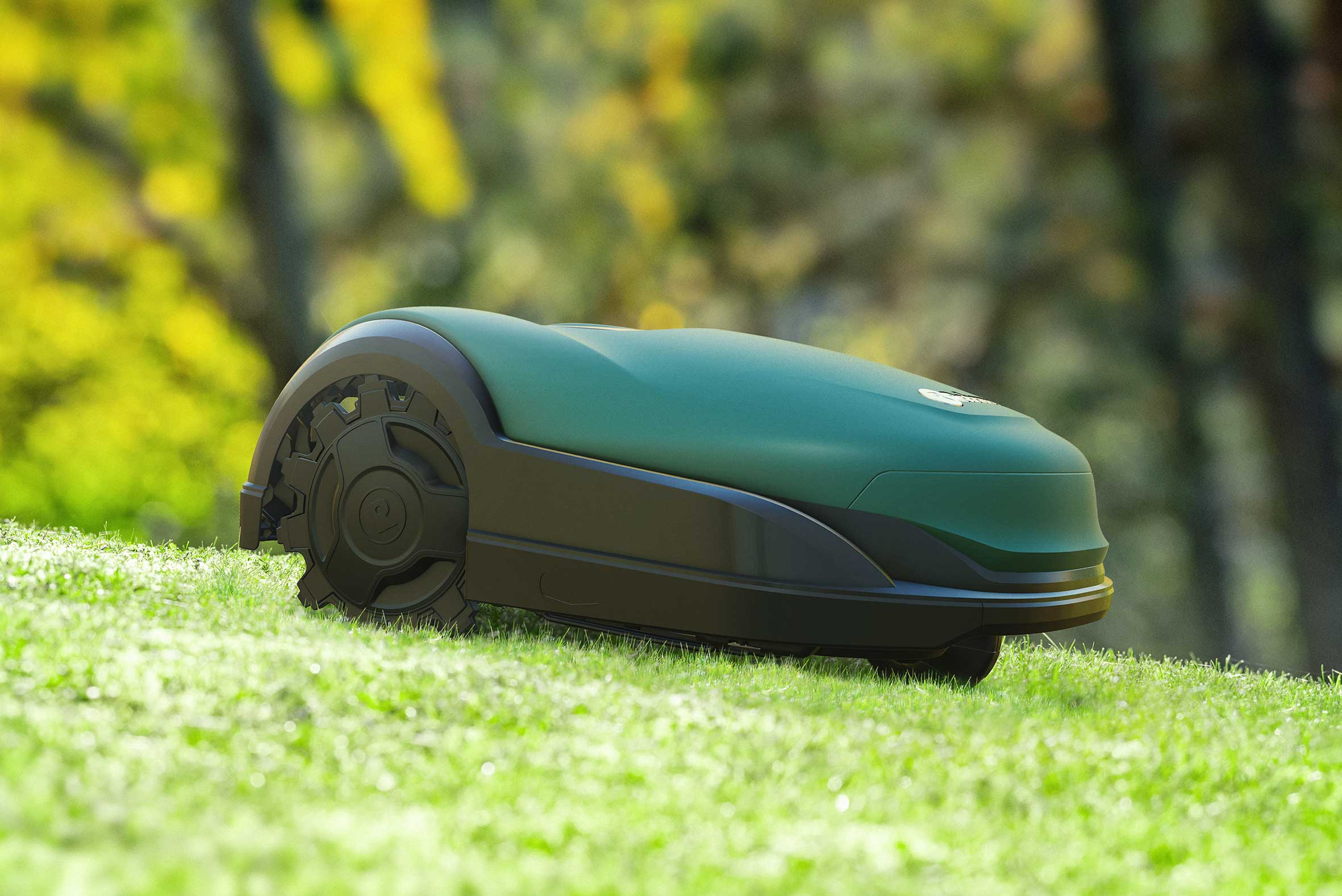Which robotic lawnmower is best for me?
30.12.2022
The purchase of a robotic mower has many benefits. In the best case, minimal touch ups are required allowing for more leisure activities in the garden. At the same time, regular lawn mowing helps promote the healthy and vigorous growth of the lawn, while mulch adds natural fertilizers to the soil. For all of this to really work in practice, your new robotic lawnmower should fit the environmental variables. Lawn sizes, slopes or different zones are just some of the criteria to consider when determining the best robotic mower for you.
Establishing general conditions for the best robotic mower
By no means is every robotic mower suitable for all lawn sizes, slopes or even different lawn zones. There are less expensive models that do a great job on small lawns with just a few features, while premium robotic mowers are designed to easily approach multiple zones and mow even large lawns in a short time with cutting widths of over 50 cm. So before buying, an assessment of your own garden should be made.

Criteria for buying a robotic mower
- Measure the lawn area by square meters. To determine the appropriate model, consider not only the maximum area output but also the operating times. Consider how long the robotic mower will be in use every day. Are rest days on weekends or are there certain times pets or critters are in the garden?
- For slopes, determine the maximum gradient. Some robotic lawnmowers can handle slopes of up to 45%: others much less. For inclines, it is also recommended to use traction wheels, which help provide a particularly good grip.
- Consider how short you want the lawn mowed. Some models cut as low as 20 mm, while others are suitable for taller turf up to 100 mm.
- Determine the distance, including obstacles, to be marked with the perimeter wire. Although in principle the wire can be purchased and extended, the maximum length is limited by the charging station.
- Count the zones that are to be mowed. Is there only main zone, secondary zones or separate zones as well? Not all robotic mowers allow programming remote start points to mow remote areas on a regular basis.
- Does the noise level of the robotic mower matter? Are there neighbors who might be disturbed?
- Do you want control options via mobile phone? If so, a robotic lawnmower with mobile phone function is suitable.
- Are there fruit trees or other woody plants on the premises that loose branches, fruit, or nuts on the lawn? In this case, a model with robust star blades is recommended.
Useful features of robotic mowers
The market for robotic mowers offers an enormous range of different equipment features. Nevertheless, the number of features does not make the best robotic mower. Keep in mind that technical equipment drives up the price. . This may not be necessary, if you ultimately need a fraction of the functions. However, it is still worthwhile to know the possibilities in order to be able to pay attention to sensible equipment features when buying.
The edge trimming function
If a robotic lawnmower has an edge-cutting function, you can save time when touching up with the lawn trimmer. The blades protrude beyond the wheelbase of these devices and are designed to reach the lawn around walls, flower beds and fences much better than models without an edge-cutting function.

Equipment with sensors
Tilt and inclination sensors are standard equipment on most robotic mowers. If the robot is tilted or lifted, the sensors are designed to have the blades come to an immediate stop. In addition, 360° sensors are also becoming increasingly widespread, which are designed to detect obstacles at an early stage so the robotic mower can take evasive action before a collision. This helps protect the garden and increase efficiency, as time-consuming turning maneuvers are minimized. Other sensors include rain sensors that are designed to have the robot return to its charging station when it rains.
Control functions
Basic models are sometimes only equipped with one control button that can make handling somewhat complicated. If such devices are supplemented with more modern technologies, such as controlling the robotic lawnmower via an app using Bluetooth or the mobile network, this can help make handling simple. On the device itself, operation via a touchscreen is also possible, especially with larger devices that make programming quick and easy.
Additional equipment with GPS modules also offers theft protection through the possibility of geofencing to help locate the robotic lawnmower.
Integrated mulch cleaner
To help the robotic lawnmowers work properly over the long term, cleaning the mowing deck regularly is important. If grass residues adhere to the wheel suspensions, the working speed may be reduced and energy consumption may be increased. An integrated mulch cleaner can minimize the intervals of manual cleaning and help simplify maintenance.
The best robotic mower for you - Test results
There are a huge number of robotic mowers on the market with different price ranges, sizes and features. There is no such thing as one robotic mower for all lawns. Instead, a careful analysis of one's own needs and requirements is important in order to purchase a model that suits the individual conditions well and can achieve optimal results.
Robomow offers high quality robotic mowing solutions for garden sizes up to 4,000 m², which have been tested in a number of international independent reports with their performance and handling even on difficult terrain.
Products
Buy a Robomow
Robomow owner
About us
Sales & Support
